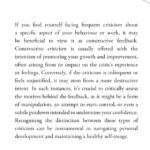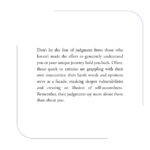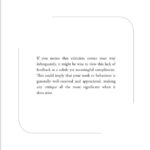Your cart is currently empty!
Think Positive, Feel Positive Affirmations – Paperback Book
We all encounter moments when our thoughts may drift towards negativity, and it’s easy to get caught in these patterns. Yet, it’s crucial to recognise that negative thoughts do not have to shape our feelings or actions. By adopting simple and effective strategies to shift our mindset, we can reframe these thoughts and focus on […]
Description
We all encounter moments when our thoughts may drift towards negativity, and it’s easy to get caught in these patterns. Yet, it’s crucial to recognise that negative thoughts do not have to shape our feelings or actions. By adopting simple and effective strategies to shift our mindset, we can reframe these thoughts and focus on the positive aspects of our lives. Taking a moment to pause and challenge unhelpful thoughts gives us greater control and resilience. By adopting research-based techniques for reframing, we can foster a brighter outlook and significantly improve our overall well-being.
What is negative thinking?
Negative thinking is something many of us experience—those automatic, pessimistic thoughts that creep into our minds during our day-to-day lives. Negative thoughts can distort our experiences and emotions, making it harder to view the world positively. It’s essential to recognise and understand these patterns, as they can significantly impact our mental well-being and overall happiness. It’s not realistic to expect ourselves never to have a negative thought again—that’s simply part of being human. Instead, what can be helpful is learning to identify these thoughts and realising that they don’t always represent the whole truth. Gaining this awareness can empower you to manage the thoughts that arise and flow through your mind.
HERE ARE SAMPLE PAGES FROM THE BOOK.










“Think Positive, Feel Positive” provides valuable affirmations and insightful explanations for tackling various common types of negative thoughts. By using these techniques, individuals can effectively address issues such as self-doubt, pessimism, and anxiety and correct the most common negative thought patterns, including.
- ALL-OR-NOTHING THINKING: We see things in black-and-white terms. If our performance isn’t perfect, we consider ourselves as complete failures.
- OVERGENERALISATION: We perceive one negative incident as an everlasting cycle of failure.
- MENTAL FILTER: We tend to focus on a single negative detail and obsess over it, which can cause our perception of reality to be overshadowed, much like a drop of ink tainting an entire beaker of water.
- DISQUALIFYING THE POSITIVE: We tend to dismiss positive experiences, insisting they “don’t count” for various reasons. This allows us to maintain a negative belief that contradicts our daily experiences.
- JUMPING TO CONCLUSIONS: We draw a negative interpretation despite a lack of definitive facts that convincingly back up our conclusion.
- MIND READING: We often jump to conclusions, assuming someone is reacting negatively to us without checking for clarity.
- FORTUNE TELLING: We anticipate negative outcomes and believe our prediction is inevitable.
- MAGNIFICATION (CATASTROPHIZING) OR MINIMIZATION: We often exaggerate the importance of certain situations, such as our own mistakes or someone else’s achievements. Conversely, you might downplay things to the point of making them seem trivial, like your own commendable qualities or another person’s shortcomings. This behaviour is commonly referred to as the “binocular trick.”
- EMOTIONAL REASONING: We assume that our negative emotions accurately reflect the realities of a situation: “I feel it, therefore it must be true.”
- SHOULD STATEMENTS: We often try to motivate ourselves using “should” and “shouldn’t.” This approach can lead to feelings of guilt. When we apply these statements to others, we may feel anger, frustration, and resentment.
- LABELING AND MISLABELING: This is an extreme form of overgeneralisation. Rather than describing our mistakes, we label ourselves negatively, saying, “I’m a loser.” Mislabelling involves using emotionally charged and loaded language to describe an event.
- PERSONALISATION: We view ourselves as the reason for some adverse external event, which, in reality, we were not mainly responsible for.
To cultivate a more carefree life, free from the burdens of internal and external negativity, consider incorporating these 55 affirmations into your daily routine. By reading each affirmation regularly, you can foster the mindset of confident, resilient individuals and enhance your overall mental strength and well-being.
Submit your review | |
Love this book, bought as a gift, great idea for Xmas prezzies, going to get myself a copy now! Every day flick to a page read it and leave it open on the page for the rest of the house to read 😊
After a hurtful and heartbreaking year, I was blessed to have had the guidance & support of an extremely beautiful soul. Now my day starts with a much-needed morning ritual of sitting in the sun, coffee in hand while practicing gratitude, mindfulness and self-reflection. ‘This book has now become a part of this practice’. There are days when you need that extra strength, reassurance and a reminder in life that a negative does not always have to stay a negative. The mind if disciplined has the power of shifting it around and turning it into an all-powerful ‘POSITIVE’. The affirmations in this book are incredibly inspiring and an excellent reminder to always embrace that inner strength.
Additional information
| Weight | 0.2 kg |
|---|---|
| Dimensions | 16.51 × .79 × 16.51 cm |



